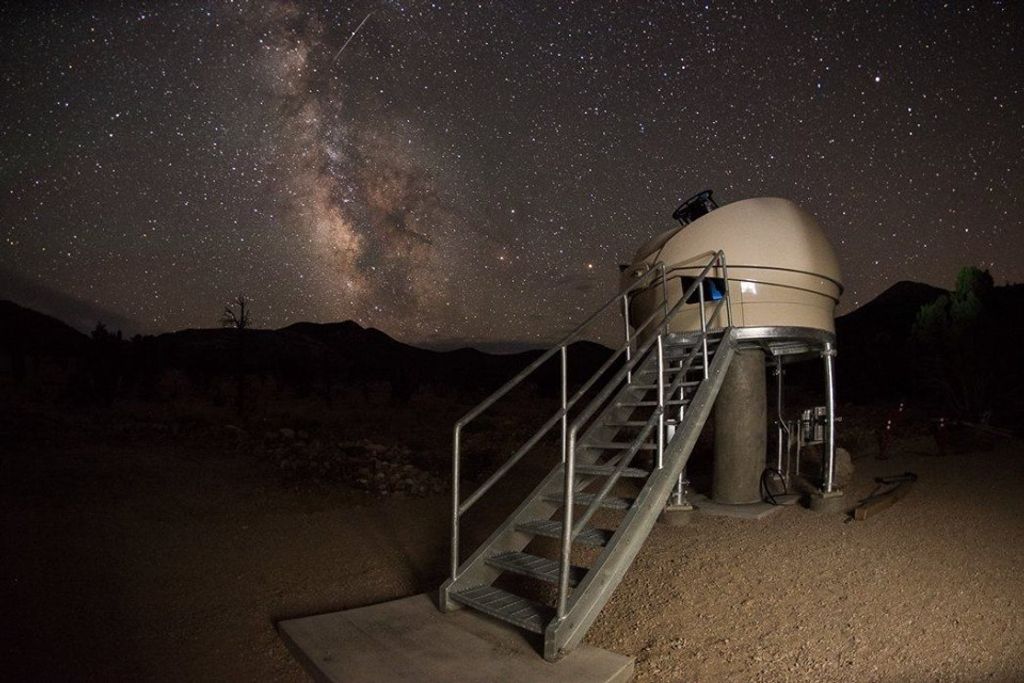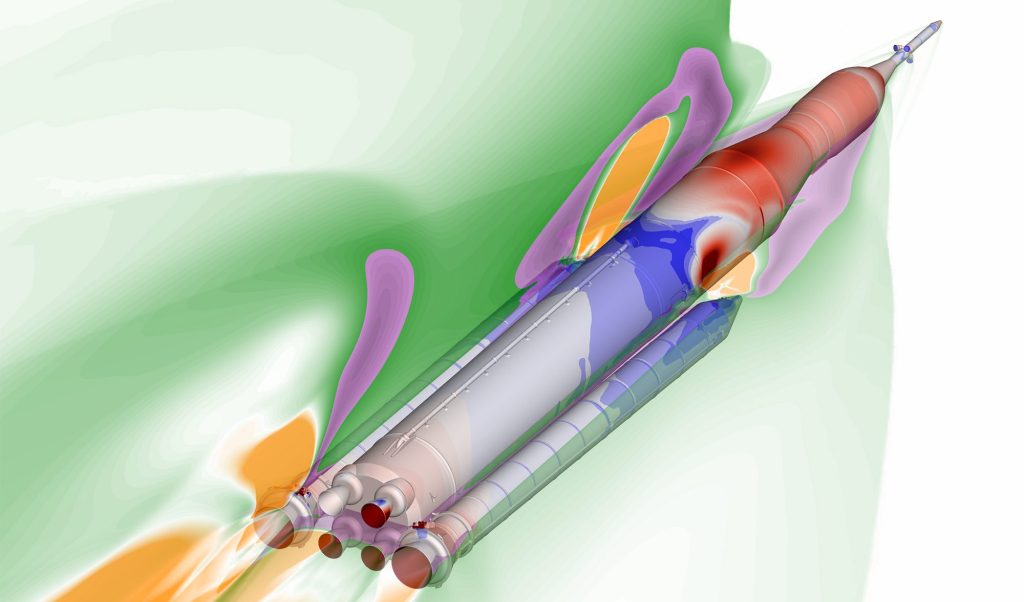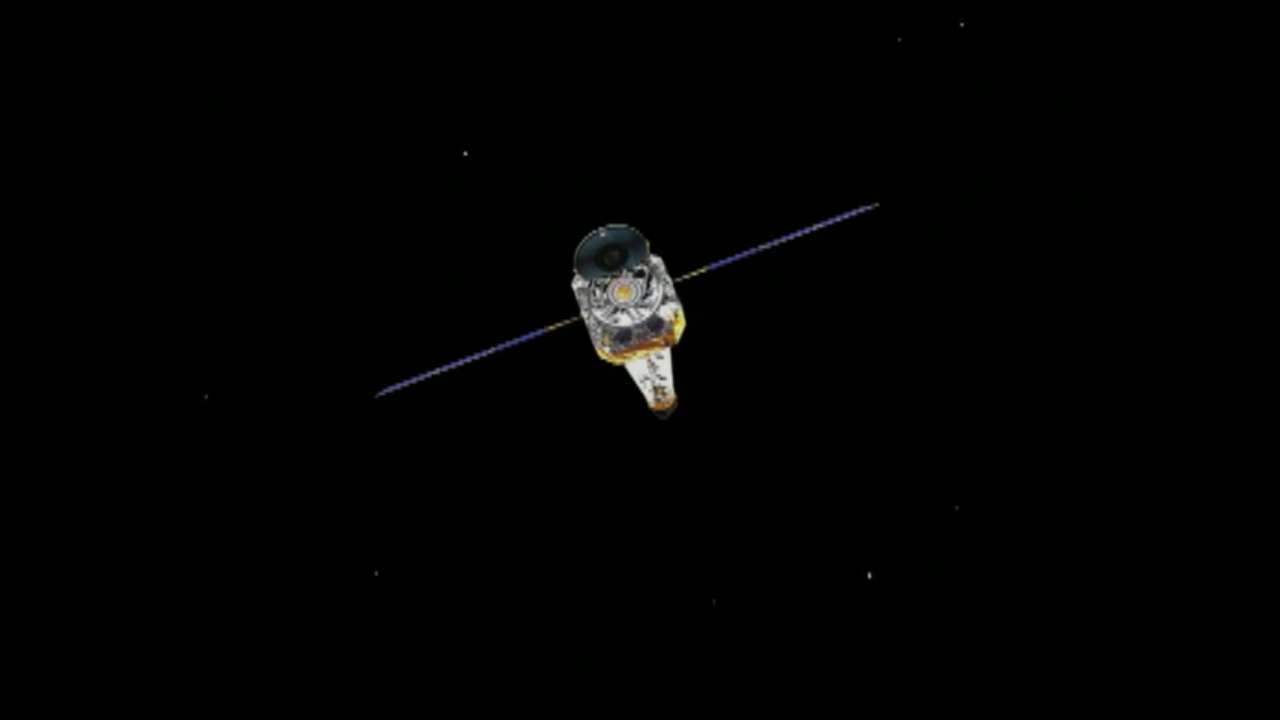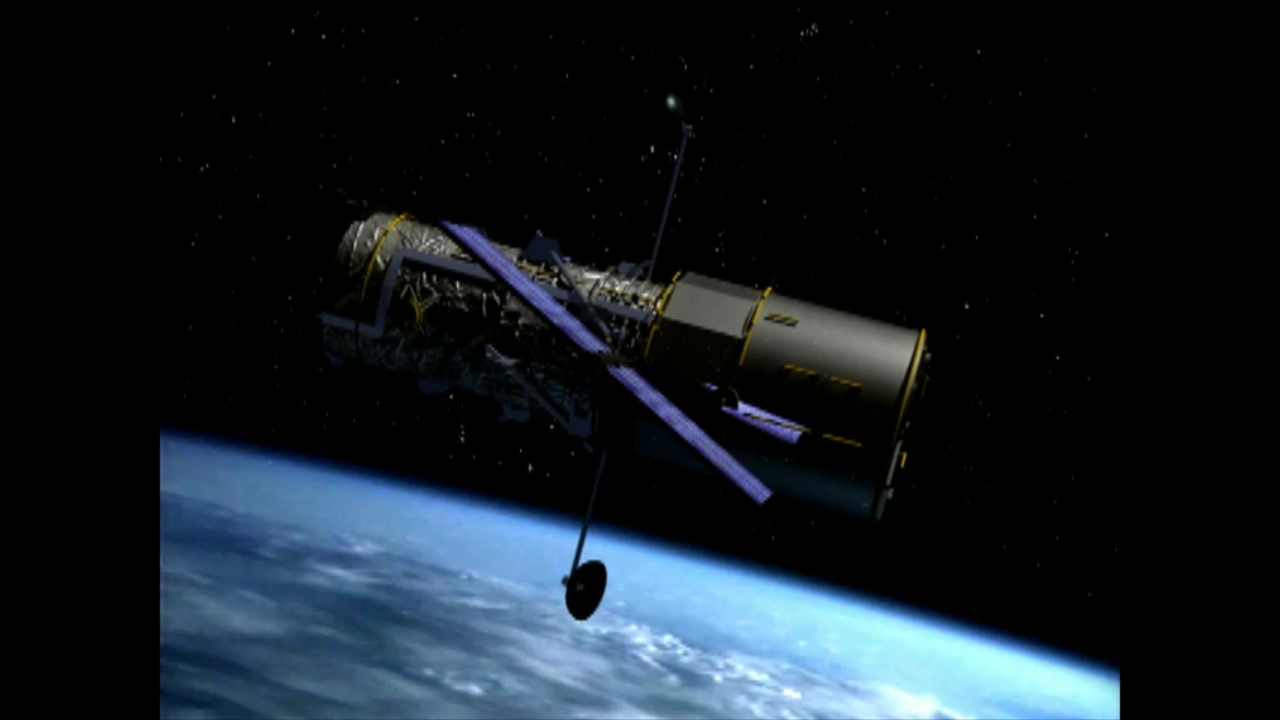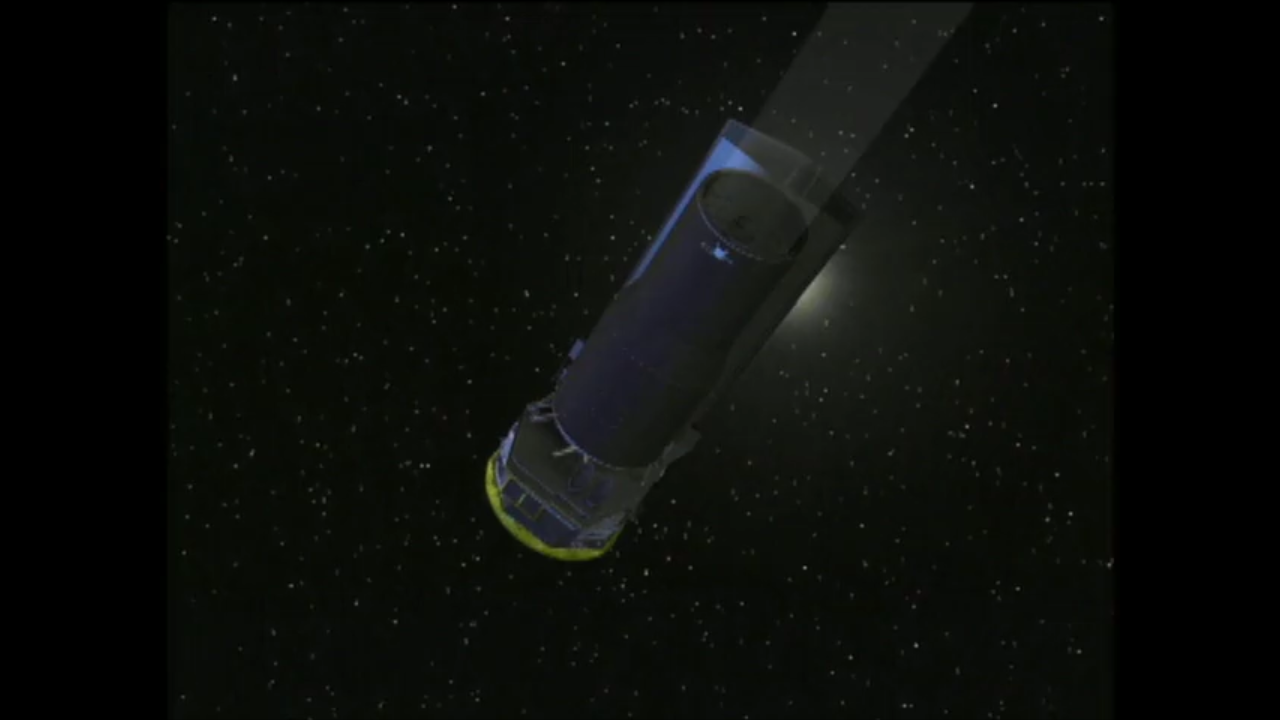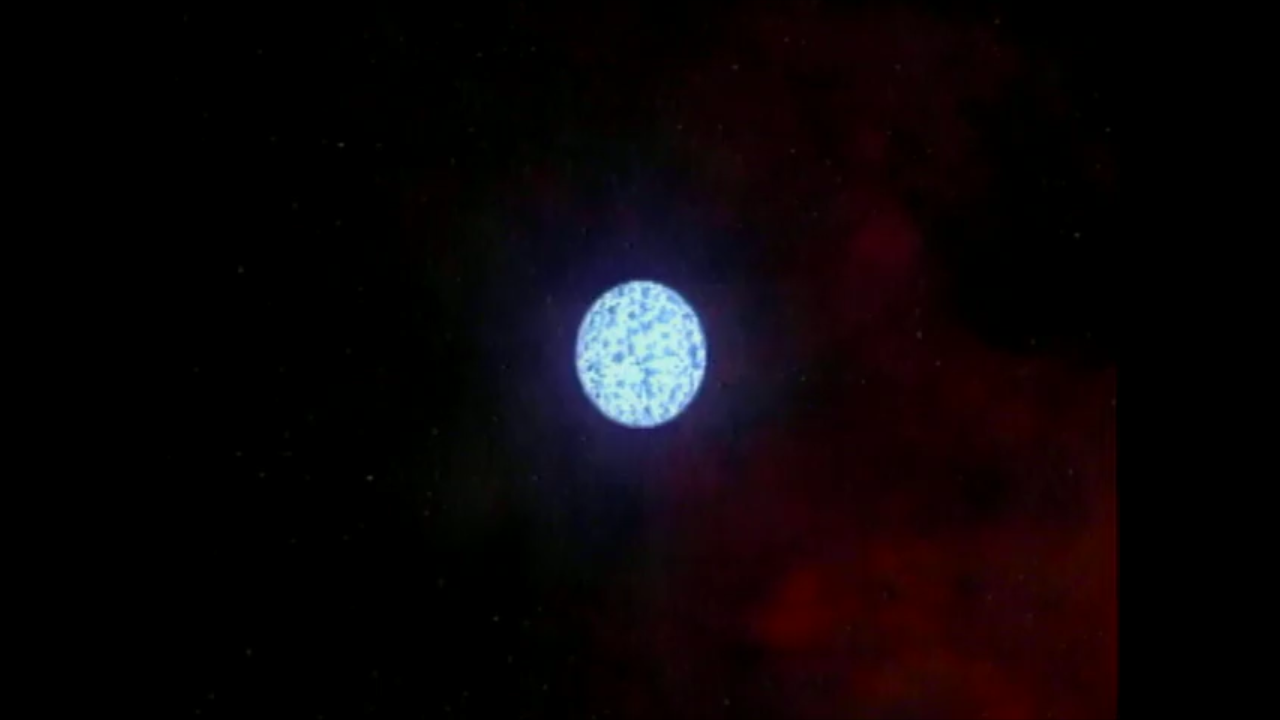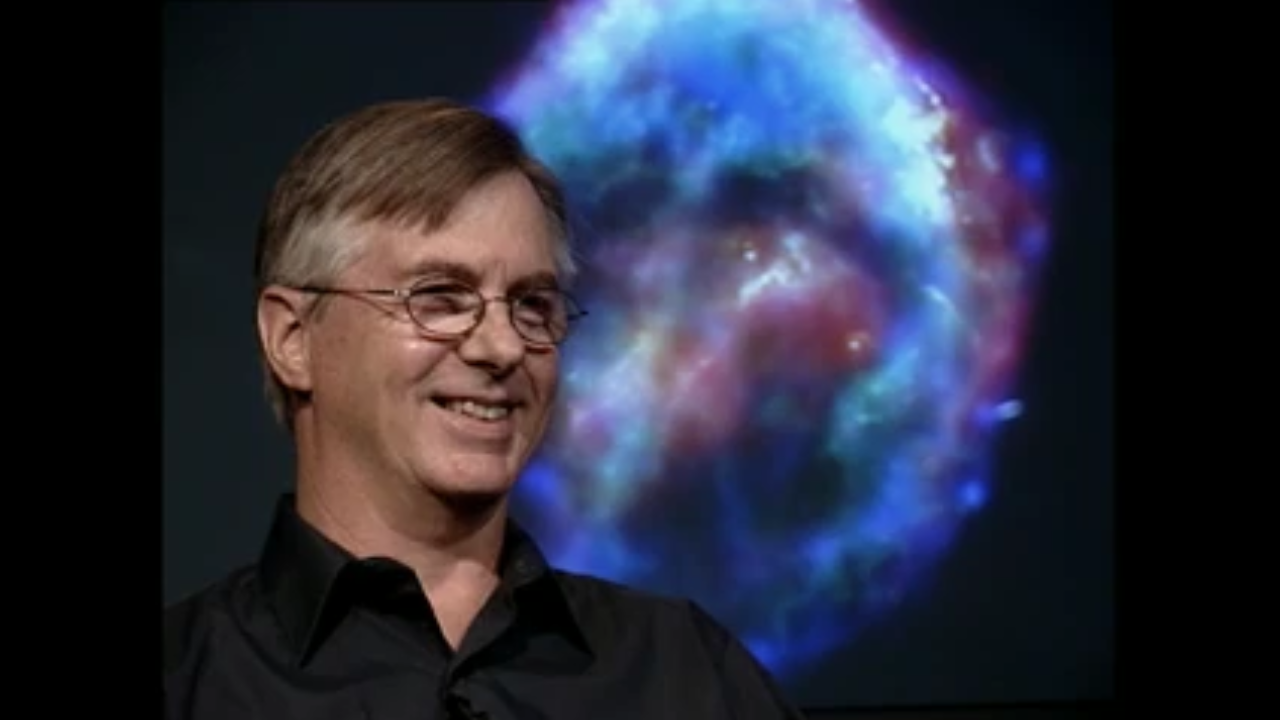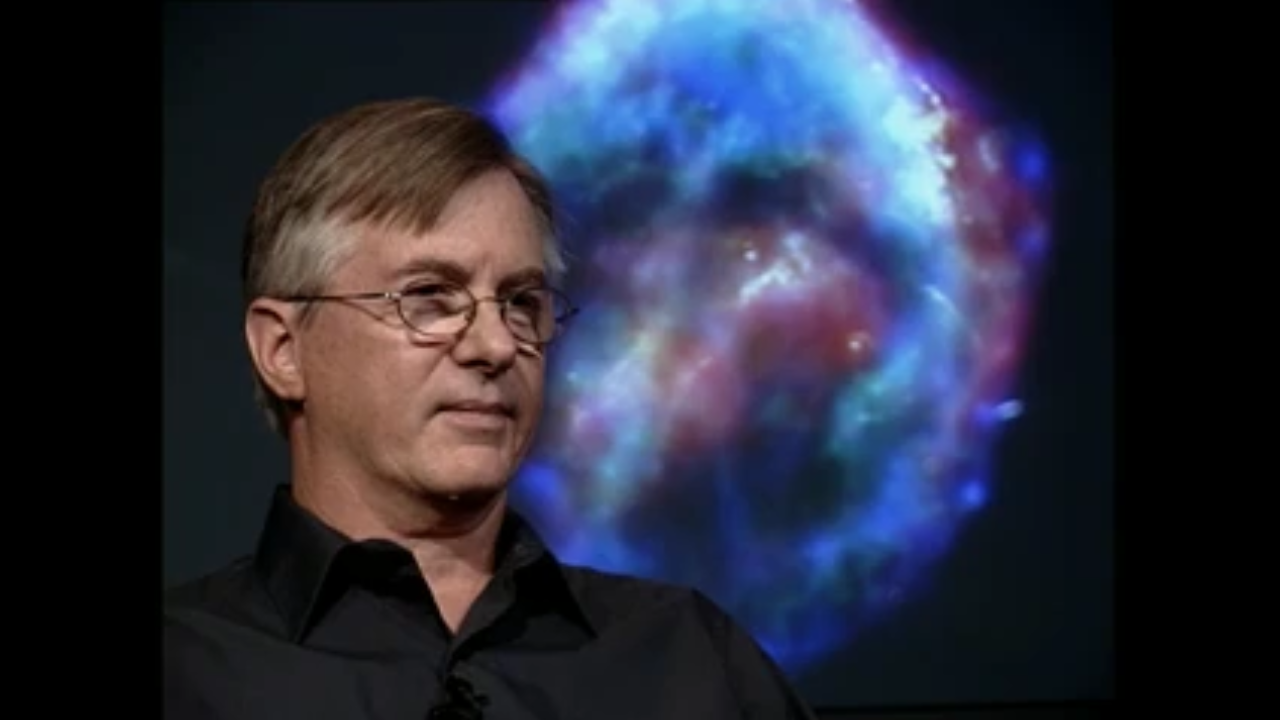1 min read
NASA’s Great Observatories Provide a Detailed View of Kepler’s Supernova Remnant
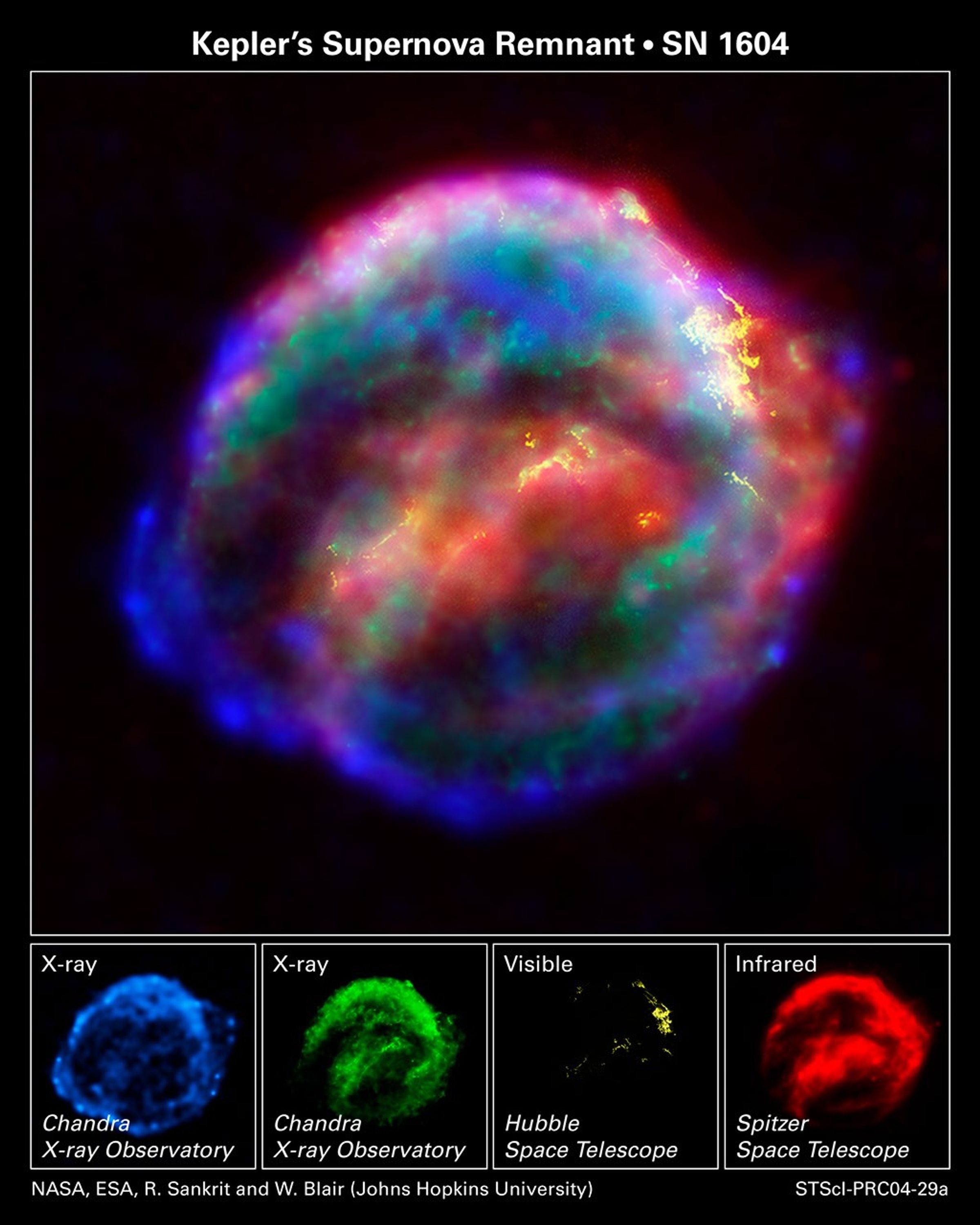
NASA's three Great Observatories - the Hubble Space Telescope, the Spitzer Space Telescope, and the Chandra X-ray Observatory - joined forces to probe the expanding remains of a supernova, called Kepler's supernova remnant, first seen 400 years ago by sky watchers, including famous astronomer Johannes Kepler.
The combined image unveils a bubble-shaped shroud of gas and dust that is 14 light-years wide and is expanding at 4 million miles per hour (2,000 kilometers per second). Observations from each telescope highlight distinct features of the supernova remnant, a fast-moving shell of iron-rich material from the exploded star, surrounded by an expanding shock wave that is sweeping up interstellar gas and dust.
Each color in this image represents a different region of the electromagnetic spectrum, from X-rays to infrared light. These diverse colors are shown in the panel of photographs below the composite image. The X-ray and infrared data cannot be seen with the human eye. By color-coding those data and combining them with Hubble's visible-light view, astronomers are presenting a more complete picture of the supernova remnant.
Visible-light images from the Hubble telescope's Advanced Camera for Surveys [colored yellow] reveal where the supernova shock wave is slamming into the densest regions of surrounding gas.
The bright glowing knots are dense clumps from instabilities that form behind the shock wave. The Hubble data also show thin filaments of gas that look like rippled sheets seen edge-on. These filaments reveal where the shock wave is encountering lower-density, more uniform interstellar material.
The Spitzer telescope shows microscopic dust particles [colored red] that have been heated by the supernova shock wave. The dust re-radiates the shock wave's energy as infrared light. The Spitzer data are brightest in the regions surrounding those seen in detail by the Hubble telescope.
The Chandra X-ray data show regions of very hot gas, and extremely high-energy particles. The hottest gas (higher-energy X-rays, colored blue) is located primarily in the regions directly behind the shock front. These regions also show up in the Hubble observations, and also align with the faint rim of glowing material seen in the Spitzer data. The X-rays from the region on the lower left (colored blue) may be dominated by extremely high-energy electrons that were produced by the shock wave and are radiating at radio through X-ray wavelengths as they spiral in the intensified magnetic field behind the shock front. Cooler X-ray gas (lower-energy X-rays, colored green) resides in a thick interior shell and marks the location of heated material expelled from the exploded star.
Kepler's supernova, the last such object seen to explode in our Milky Way galaxy, resides about 13,000 light-years away in the constellation Ophiuchus.
The Chandra observations were taken in June 2000, the Hubble in August 2003; and the Spitzer in August 2004.
About the Object
- R.A. PositionR.A. PositionRight ascension – analogous to longitude – is one component of an object's position.17h 30m 40.79s
- Dec. PositionDec. PositionDeclination – analogous to latitude – is one component of an object's position.-21° 29' 11.0"
- ConstellationConstellationOne of 88 recognized regions of the celestial sphere in which the object appears.Ophiuchus
- DistanceDistanceThe physical distance from Earth to the astronomical object. Distances within our solar system are usually measured in Astronomical Units (AU). Distances between stars are usually measured in light-years. Interstellar distances can also be measured in parsecs.13,000 light-years (4,000 parsecs)
- DimensionsDimensionsThe physical size of the object or the apparent angle it subtends on the sky.This image is 5 arcminutes (19 light-years or 5.8 parsecs) wide.
About the Data
- Data DescriptionData DescriptionProposal: A description of the observations, their scientific justification, and the links to the data available in the science archive.
Science Team: The astronomers who planned the observations and analyzed the data. "PI" refers to the Principal Investigator.Chandra Data This image was created from Chandra observations from proposal 01500022: S. Holt (F.W. Olin College of Engineering), U. Hwang, R. Petre, and M. Corcoran (GSFC), E. Gotthelf (Columbia Astrophysics Lab), G. Allen (Massachusetts Inst. of Tech.), J. Keohane (North Carolina). The science team using this data is: R. Sankrit and W. Blair (Johns Hopkins Univ.), T. DeLaney (U. Minnesota and Harvard-Smithsonian/Center for Astrophysics), L. Rudnick and J. A. Ennis (U. Minnesota), I. Harrus (Goddard Space Flight Center). Hubble Data This image was created from Hubble observations from proposal 9731:: R. Sankrit and W. Blair (Johns Hopkins Univ.), L. Rudnick (U. Minnesota), T. DeLaney (U. Minnesota and Harvard-Smithsonian/Center for Astrophysics), I. Harrus (Goddard Space Flight Center). Spitzer Data This image was created from Spitzer observations from proposal 3413: W. Blair, R. Sankrit, and P. Ghavamian (Johns Hopkins Univ.), K. Borkowski and S. Reynolds (North Carolina State Univ.), and K. Long (Space Telescope Science Inst.). - InstrumentInstrumentThe science instrument used to produce the data.CXO>ACIS-S; HST>ACS/WFC and HST>WFPC2; SST>MIPS and SST>IRAC
- Exposure DatesExposure DatesThe date(s) that the telescope made its observations and the total exposure time.June 30, 2000 (CXO), August 28-29, 2003 and May 26, 2004 (HST), August 25, 2004 and September 3, 2004 (SST)
- FiltersFiltersThe camera filters that were used in the science observations.CXO: 0.3-6 keV HST: F502N ([O III]), F550M (V), F658N (Halpha+[N II]), F660N ([N II]), and F673N ([S II]) SST: MIPS 24 and 70 micron; IRAC 4.5 and 8 micron
- Object NameObject NameA name or catalog number that astronomers use to identify an astronomical object.Kepler's Supernova Remnant, SN 1604, V 843 Ophiuchi, G004.5+06.8
- Object DescriptionObject DescriptionThe type of astronomical object.Supernova Remnant
- Release DateOctober 6, 2004
- Science ReleaseNASA’s Great Observatories May Unravel 400-Year Old Supernova Mystery
- Credit

Blue: 4-6 keV (CXO) Green: 0.3-1.4 keV (CXO) Yellow: F658 N (Halpha+[N II]) Red: MIPS 24 microns (SST)

Related Images & Videos
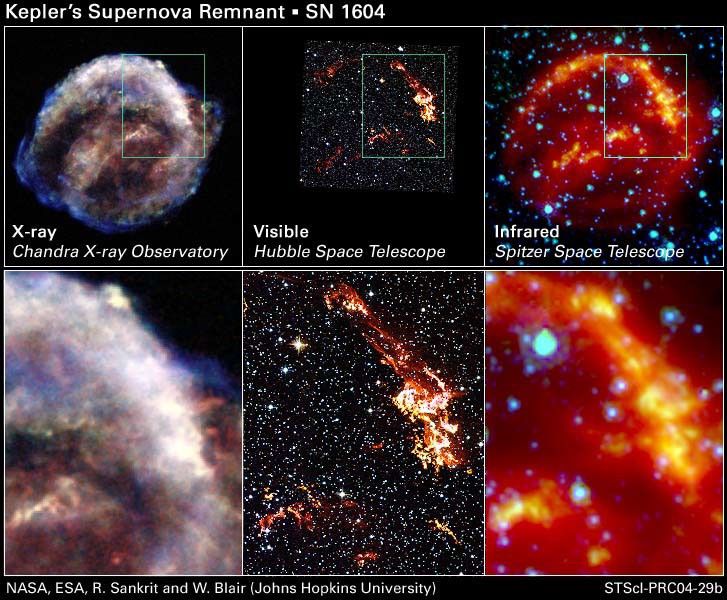
Kepler's Supernova Remnant: Views from Chandra, Hubble, and Spitzer
These images represent views of Kepler's supernova remnant taken in X-rays, visible light, and infrared radiation. Each top panel shows the entire remnant. Each color in this image represents a different region of the electromagnetic spectrum, from X-rays to infrared light. The...

Shock Wave in Kepler's Supernova Remnant
Detailed knots and filamentary ribbons of glowing gas are apparent in this Hubble Space Telescope image of Kepler's supernova remnant. This image was taken with Hubble's Advanced Camera for Surveys (ACS) in August 2003. Filters onboard Hubble isolate visible light emitted by...
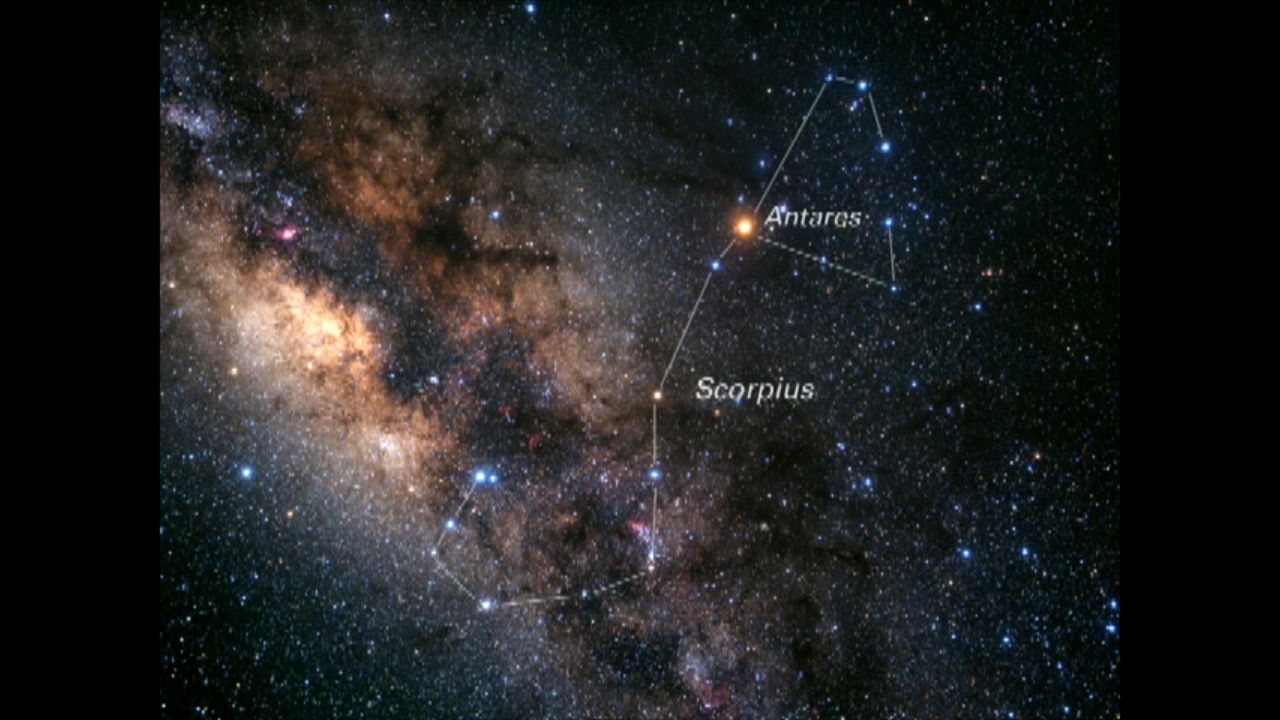
Zoom-In to Kepler's Supernova Remnant
This "zoom" starts in the Scorpius constellation and pushes through deeper and narrower telescopic fields to at last reach Kepler's supernova remnant, a composite of images from NASA's Chandra X-ray Observatory, Hubble Space Telescope, and Spitzer Space Telescope.

Chandra, Hubble, Spitzer Composite View of Kepler's supernova
The composite view of Kepler's supernova splits into its three components: blue-green for Chandra, yellow for Hubble, and red for Spitzer. Each observatory's full image is then shown for side-by-side comparison, beginning with Chandra, then Hubble, and finally Spitzer.
Share
Details
Claire Andreoli
NASA’s Goddard Space Flight Center
Greenbelt, Maryland
claire.andreoli@nasa.gov













